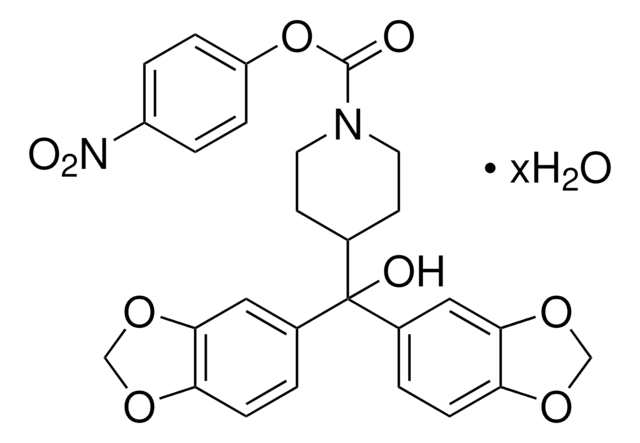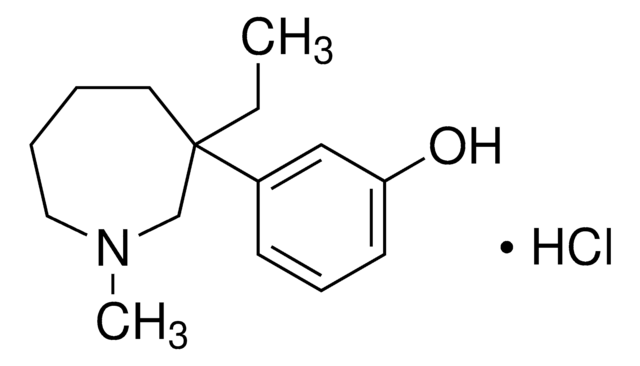SML0257
JZL195
≥98% (HPLC)
Sinónimos:
4-[(3-Phenoxyphenyl)methyl]-1-piperazinecarboxylic acid 4-nitrophenyl ester
About This Item
Productos recomendados
Quality Level
assay
≥98% (HPLC)
form
powder
color
white to beige
solubility
DMSO: ≥5 mg/mL at warmed
storage temp.
−20°C
SMILES string
[O-][N+](=O)c1ccc(OC(=O)N2CCN(CC2)Cc3cccc(Oc4ccccc4)c3)cc1
InChI
1S/C24H23N3O5/c28-24(32-22-11-9-20(10-12-22)27(29)30)26-15-13-25(14-16-26)18-19-5-4-8-23(17-19)31-21-6-2-1-3-7-21/h1-12,17H,13-16,18H2
InChI key
QNYRAEKLMNDRFY-UHFFFAOYSA-N
Application
- as a selective inhibitor of endocannabinoid (eCB) clearance enzymes to induce in vivo long-term depression at CA3-CA1 synapses and at prelimbic (PrL)-nucleus accumbens (NAc)synapses, to study the neuroprotective action of eCB
- to inhibit the action of hydrolytic enzymes that limit eCB activity, to study the effect of 2-linoleoylglycerol (2-LG) on the human CB1 receptor activity
- as a dual fatty acid amide hydrolase (FAAH)/monoacylglycerol lipase (MAGL) inhibitor to study its dose-related antipruritic effect on the serotonin (5-HT)-induced scratching model
Biochem/physiol Actions
Storage Class
11 - Combustible Solids
wgk_germany
WGK 3
flash_point_f
Not applicable
flash_point_c
Not applicable
Elija entre una de las versiones más recientes:
Certificados de análisis (COA)
¿No ve la versión correcta?
Si necesita una versión concreta, puede buscar un certificado específico por el número de lote.
¿Ya tiene este producto?
Encuentre la documentación para los productos que ha comprado recientemente en la Biblioteca de documentos.
Nuestro equipo de científicos tiene experiencia en todas las áreas de investigación: Ciencias de la vida, Ciencia de los materiales, Síntesis química, Cromatografía, Analítica y muchas otras.
Póngase en contacto con el Servicio técnico








